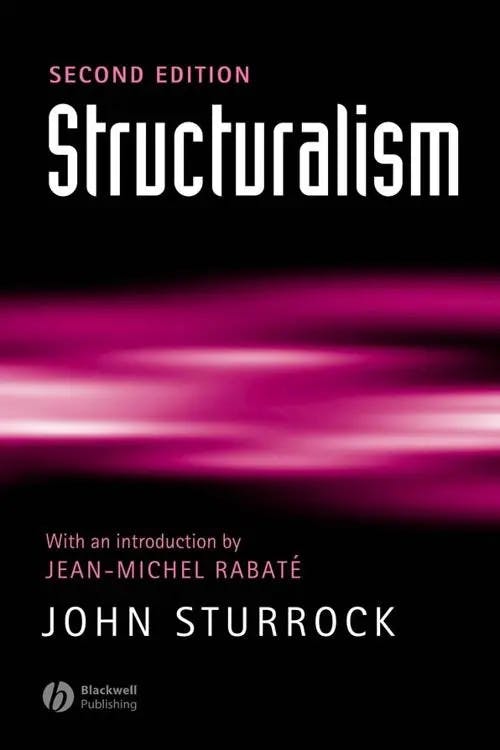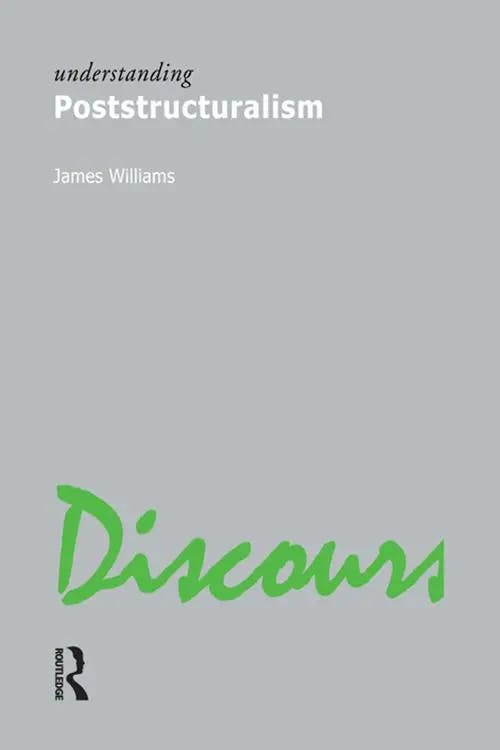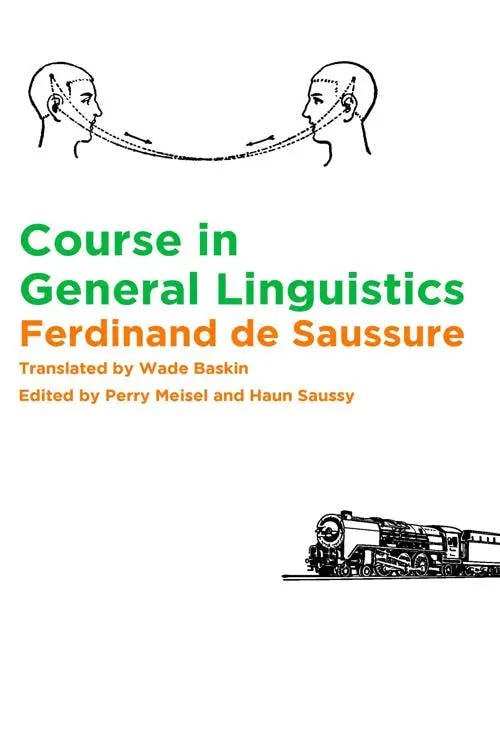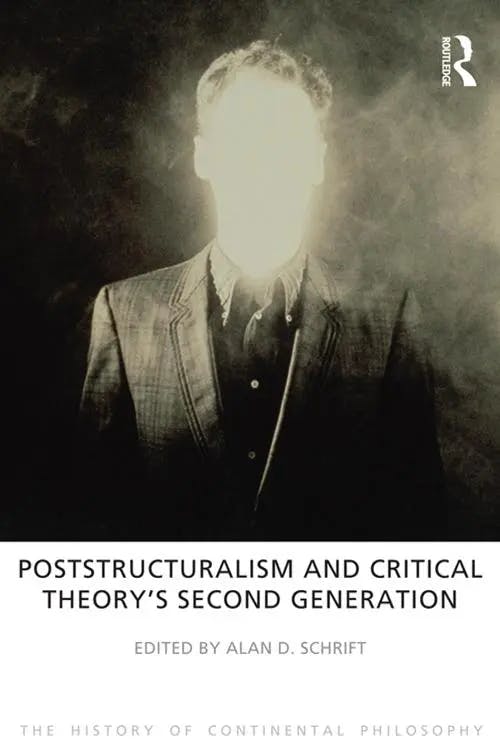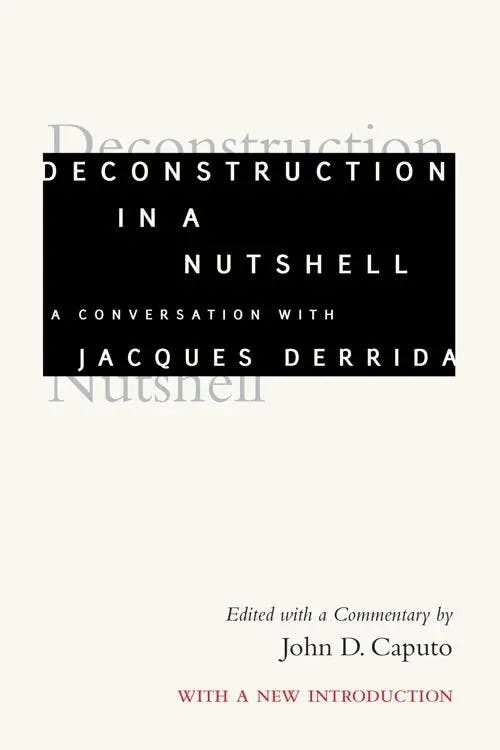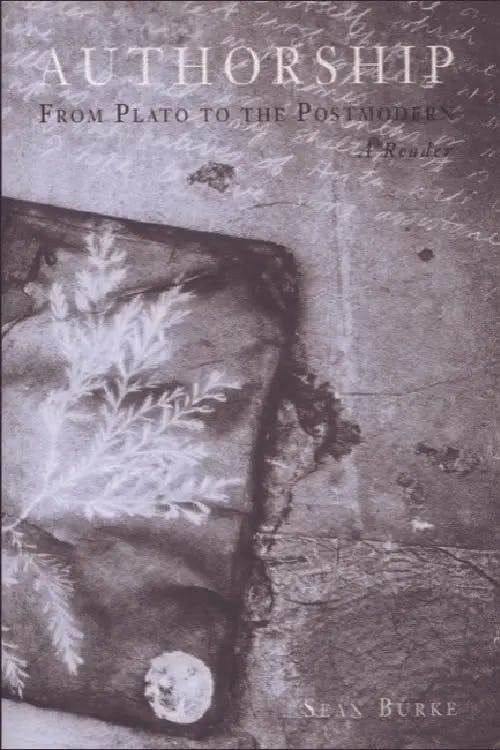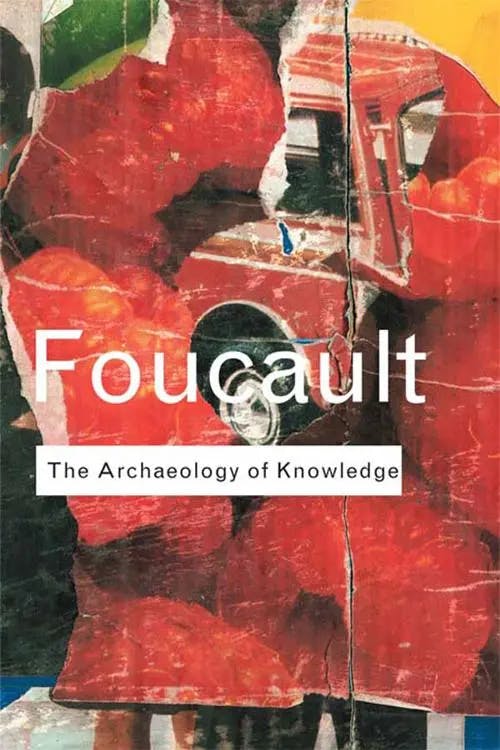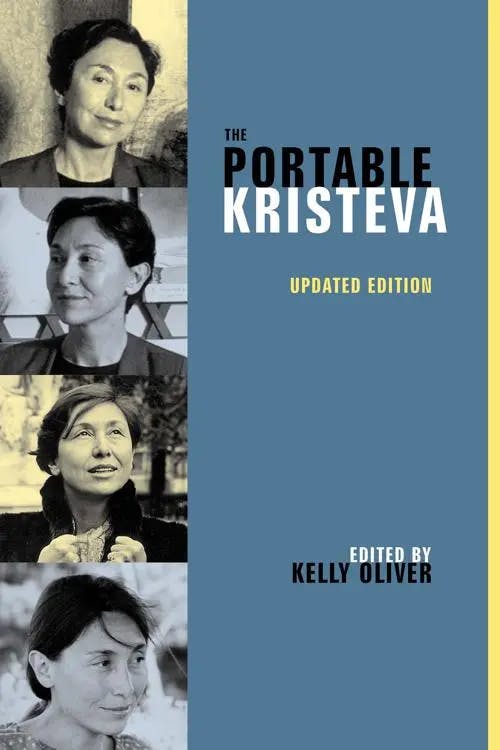What is Poststructuralism?
MSt, Women's, Gender & Sexuality Studies (University of Oxford)
Date Published: 02.08.2023,
Last Updated: 06.09.2023
Share this article
Defining poststructuralism
Poststructuralism is an intellectual movement that developed in the 1960s and 1970s, most prominently in France. Poststructuralism critiques and extends structuralism by challenging stable meanings, definitions, binaries, and structures, viewing the limits of knowledge as central to knowledge itself.
Poststructuralism’s roots lie in phenomenology, Freudian psychoanalysis, existentialism, and, most directly, structuralism. A slightly earlier intellectual movement, structuralism sought to discover and describe structures underlying human behavior, culture, and language. While poststructuralism rejects universal systems and truths, it does not wholeheartedly refute structuralism. In fact, many poststructuralists began as structuralists seeking to extend the movement further. As John Sturrock writes,
Post-Structuralism is a critique of Structuralism conducted from within: that is, it turns certain of Structuralism’s arguments against itself and points to certain fundamental inconsistencies in their method which Structuralists have ignored. (2008)
John Sturrock
Post-Structuralism is a critique of Structuralism conducted from within: that is, it turns certain of Structuralism’s arguments against itself and points to certain fundamental inconsistencies in their method which Structuralists have ignored. (2008)
While structuralism trusts in the security and attainability of knowledge, poststructuralism, believes “the limits of knowledge play an unavoidable role at its core” (Williams, 2014):
For poststructuralism, the core is not more reliable, significant and better known than its limits or outer boundaries. This is because the clear distinction of core and limit is not possible. (2014)
James Williams
For poststructuralism, the core is not more reliable, significant and better known than its limits or outer boundaries. This is because the clear distinction of core and limit is not possible. (2014)
Poststructuralism interrogates structuralism’s core belief in signs, as theorized by Ferdinand de Saussure in his Course in General Linguistics (2011), published posthumously in 1916. In brief, a sign consists of a signifier and signified, respectively the sound-image (word) and what it refers to. For example, T-R-E-E signifies a large plant with roots, a trunk, branches, and foliage. The combination of the signifier and signified creates the sign. For most signs, the connection between signifier and signified is arbitrary: there is no natural connection between the letters/sounds and the concept they describe. Though arbitrary, the sign, Saussure and other structuralists believed, was unchangeable. Saussure writes,
The signifier, though to all appearances freely chosen with respect to the idea that it represents, is fixed, not free, with respect to the linguistic community that uses it. The masses have no voice in the matter, and the signifier chosen by language could be replaced by no other. [...] No individual, even if he willed it, could modify in any way at all the choice that has been made; and what is more, the community itself cannot control so much as a single word; it is bound to the existing language. (1916, [2011])
Ferdinand de Saussure
The signifier, though to all appearances freely chosen with respect to the idea that it represents, is fixed, not free, with respect to the linguistic community that uses it. The masses have no voice in the matter, and the signifier chosen by language could be replaced by no other. [...] No individual, even if he willed it, could modify in any way at all the choice that has been made; and what is more, the community itself cannot control so much as a single word; it is bound to the existing language. (1916, [2011])
In short, for structuralists, signs are fixed. Poststructuralists agree that signs are arbitrary, but they believe that all meanings are malleable, open to change and interpretation.
Alan D. Schrift identifies another important change between structuralism and poststructuralism: while structuralism treats systems as though they are frozen in time (a synchronic approach), poststructuralism reincorporates historical thinking (a diachronic approach). Schrift writes,
where the structuralists sought to understand the extratemporal functioning of systems (whether social, psychic, economic, or literary), thinkers such as Foucault, Derrida, Deleuze, or Lyotard – in a corrective to the overemphasis on synchrony that one finds in structuralist writing – attend to the historical unfolding of the phenomena they choose to examine. (2014)
Edited by Alan D. Schrift
where the structuralists sought to understand the extratemporal functioning of systems (whether social, psychic, economic, or literary), thinkers such as Foucault, Derrida, Deleuze, or Lyotard – in a corrective to the overemphasis on synchrony that one finds in structuralist writing – attend to the historical unfolding of the phenomena they choose to examine. (2014)
Poststructuralism also reconsiders the subject. While existentialism and phenomenology both take a subject-centered approach, structuralism focuses on systems and has therefore been accused of causing the “death of the subject.” Poststructuralists, especially those challenging the racialized and gendered assumptions of the humanist subject, re-envisioned the subject as constantly transforming. Judith Butler’s gender theory, for instance, re-evaluates gender through poststructuralist principles. Rather than viewing male and female as fixed, binary categories (as a structuralist might), Butler examines how the gendered subject is created through the performance of gender and opens up the potential for a multitude of gendered expressions and meanings.
Indeed, while structuralism focuses on identity and sameness, poststructuralism focuses on multiplicity and difference. Sturrock neatly summarizes the core difference between the two movements:
Post-Structuralism differs from Structuralism in being a philosophy of Becoming rather than of Being: it is endlessly dynamic, allowing us no escape or apparent respite from the shifting play of meanings. (2008)
Poststructuralism is closely related to and sometimes conflated with Jacques Derrida’s concept of deconstruction. John D. Caputo’s commentary in Deconstruction in a Nutshell (2020) is useful for understanding deconstruction and, by extension, poststructuralism’s general approach:
The very meaning and mission of deconstruction is to show that things—texts, institutions, traditions, societies, beliefs, and practices of whatever size and sort you need—do not have definable meanings and determinable missions, that they are always more than any mission would impose, that they exceed the boundaries they currently occupy. [...] A “meaning” or a “mission” is a way to contain and compact things, like a nutshell, gathering them into a unity, whereas deconstruction bends all its efforts to stretch beyond these boundaries, to transgress these confines, to interrupt and disjoin all such gathering. [...] One might even say that cracking nutshells is what deconstruction is. In a nutshell.
Jacques Derrida and John D. Caputo
The very meaning and mission of deconstruction is to show that things—texts, institutions, traditions, societies, beliefs, and practices of whatever size and sort you need—do not have definable meanings and determinable missions, that they are always more than any mission would impose, that they exceed the boundaries they currently occupy. [...] A “meaning” or a “mission” is a way to contain and compact things, like a nutshell, gathering them into a unity, whereas deconstruction bends all its efforts to stretch beyond these boundaries, to transgress these confines, to interrupt and disjoin all such gathering. [...] One might even say that cracking nutshells is what deconstruction is. In a nutshell.
This resistance to definition is central to poststructuralism. We will see an emphasis on shifting meanings and constant questioning throughout this guide as we introduce you to some of poststructuralism’s most prominent thinkers and concepts.
Barthes and Foucault: structuralists vs. poststructuralists
Along with Claude Lévi-Strauss and Jacques Lacan, Roland Barthes and Michel Foucault were prominent figures in the French structuralist movement. While many of their ideas align with structuralism (see our guide), they are important to poststructuralism as well. Both took part in a major symposium at Johns Hopkins University in 1966, “The Languages of Criticism and the Sciences of Man,” now considered the moment when the poststructuralist voice began to emerge. Both Barthes and Foucault questioned the stability of structures and origin of meanings, Barthes for literary interpretation and Foucault for historical analysis.
Barthes: Death of the Author
Participating in the poststructuralist impulse to question centers and origin points, Barthes unsettles the primacy of the author in his famous essay, “The Death of the Author” (1967, reprinted in Authorship [1995]). Barthes argues that critics should not consider the author the arbiter of the text’s meanings or limit their interpretations authorial intentions. In fact, Barthes argues that a work is not a product of a singular authorial voice. Instead, a text is “a multi-dimensional space in which a variety of writings, none of them original, blend and clash” (1967). The author only combines, imitates, and contests other works. Barthes writes,
To give a text an Author is to impose a limit on that text, to furnish it with a final signified, to close the writing. Such a conception suits criticism very well, the latter then allotting himself the important task of discovering the Author [...]: when the Author has been found, the text is ‘explained’ — victory to the critic. (Barthes, 1967)
Edited by Seán Burke
To give a text an Author is to impose a limit on that text, to furnish it with a final signified, to close the writing. Such a conception suits criticism very well, the latter then allotting himself the important task of discovering the Author [...]: when the Author has been found, the text is ‘explained’ — victory to the critic. (Barthes, 1967)
Following a poststructuralist urge to avoid limitations and closures, Barthes argues that writing should be “disentangled” rather than “deciphered,” “ranged over, not pierced”:
[...] writing ceaselessly posits meaning ceaselessly to evaporate it, carrying out a systematic exemption of meaning. In precisely this way literature (it would be better from now on to say writing), by refusing to assign a ‘secret’, an ultimate meaning, to the text (and to the world as text), liberates what may be called an anti-theological activity, an activity that is truly revolutionary since to refuse to fix meaning is, in the end, to refuse God and his hypostases — reason, science, law. (Barthes, 1967)
Barthes clarifies that the text’s multiplicities — drawing from many cultures, engaging many other works, opening into many meanings — do find a focus point, but it is the reader, not the author: “a text’s unity lies not in its origin but its destination” (1967).
Barthes demonstrates this revolutionary approach to criticism in S/Z (1970). In it, Barthes provides an extended analysis of Honoré de Balzac’s Sarrasine (1831), offering many interpretations and pushing poststructuralism forward.
Foucault: The Archaeology of Knowledge
Although he eschewed labels, historian and philosopher Foucault has been claimed by structuralists and poststructuralists alike. His approach to history can be considered poststructuralist because he critically responds to structuralist approaches, reconsiders the relationships between individuals and structurals, and “transforms our ideas about what an individual is, in particular, in terms of freedom and power” (Williams, 2014).
Foucault is known for his “genealogies” — investigations of concepts we sometimes view outside of historical context (madness, sexuality, etc.) with a goal of re-evaluating how they work in the present. In The Archaeology of Knowledge (1969), Foucault outlines and extends the approach to history present in his earlier works: History of Madness (1961), The Birth of the Clinic (1963), and The Order of Things (1966). He explicitly seeks to avoid imposing a structural analysis on history and rejects a continuous approach to history in favor of discontinuity. For Foucault, attempts to emphasize long, unified histories are inaccurate; a discontinuous approach accounts for historical breaks and developments that do not necessarily emerge naturally from what came before.
Foucault’s description of his text rings with a poststructuralist sensibility:
at every turn, it stands back, measures up what is before it, gropes towards its limits, stumbles against what it does not mean, and digs pits to mark out its own path. At every turn, it denounces any possible confusion. It rejects its identity, without previously stating: I am neither this nor that. It is not critical, most of the time; it is not a way of saying that everyone else is wrong. It is an attempt to define a particular site by the exteriority of its vicinity; rather than trying to reduce others to silence, by claiming that what they say is worthless, I have tried to define this blank space from which I speak, and which is slowly taking shape in a discourse that I still feel to be so precarious and so unsure. (1969)
Michel Foucault
at every turn, it stands back, measures up what is before it, gropes towards its limits, stumbles against what it does not mean, and digs pits to mark out its own path. At every turn, it denounces any possible confusion. It rejects its identity, without previously stating: I am neither this nor that. It is not critical, most of the time; it is not a way of saying that everyone else is wrong. It is an attempt to define a particular site by the exteriority of its vicinity; rather than trying to reduce others to silence, by claiming that what they say is worthless, I have tried to define this blank space from which I speak, and which is slowly taking shape in a discourse that I still feel to be so precarious and so unsure. (1969)
Foucault builds the poststructuralist approach as he tries to avoid identity and remain critically engaged without simply opposing everything. He rejects limits and foregone conclusions:
My aim was to analyse this history, in the discontinuity that no teleology would reduce in advance; to map it in a dispersion that no pre-established horizon would embrace; to allow it to be deployed in an anonymity on which no transcendental constitution would impose the form of the subject; to open it up to a temporality that would not promise the return of any dawn. (1969)
Foucault theorizes systems of knowledge and power that are not fixed or universal. Instead, he accounts for the discontinuities of history and for power’s ability to transform in order to protect itself.
Jacques Derrida and deconstruction
Perhaps the idea most associated with poststructuralism is deconstruction, theorized by Jacques Derrida. Derrida presented the beginnings of his theory of deconstruction at the influential 1966 conference “The Languages of Criticism and the Sciences of Man,” giving early voice to what would grow into a poststructuralist approach. Poststructuralism and deconstruction share many principles and are often conflated. Deconstruction was intentionally theorized by Derrida, while poststructuralism is a more amorphous term; it is not a cohesive movement but a name applied to a group of related theories which critiqued or extended structuralism, including deconstruction.
In the 1994 roundtable Caputo transcribed, Derrida described deconstruction as “not a method or some tool that you apply to something from the outside” but rather a process “which happens inside” (2020). In other words, deconstruction works from within a discourse, not wholesale rejecting it.
If deconstruction rejects anything, it is binaries. Derrida took issue with structuralism’s reliance on extremes and oppositions. For example, Lévi-Strauss treated myths as illustrations of universal conflicts between binary ideas — light/dark, culture/nature, man/woman, reason/passion, etc. Structuralism views these binaries as largely stable throughout time and across cultures. Poststructuralists like Derrida, however, argued that these binaries are actually hierarchies (one side is valued over the other) and asked critical questions about how these binary structures came to be, their usefulness for cultural analysis, and the potential to unsettle them.
While structuralism seeks unity, deconstruction seeks multiplicity. Rather than treating the boundary/limit as resulting from the center, Derrida argues that the center/unity emerges from the concept of a limit and holds that difference within it. For example, a unified national community actually contains, within its ideal identity, “the other” and “the outsider” — it is reliant upon that idea. Derrida says,
The privilege granted to unity, to totality, to organic ensembles, to community as a homogenized whole—this is a danger for responsibility, for decision, for ethics, for politics. That is why I insisted on what prevents unity from closing upon itself, from being closed up. [...] the relationship of the unity to itself implies some difference. (2020)
Jacques Derrida and John D. Caputo
The privilege granted to unity, to totality, to organic ensembles, to community as a homogenized whole—this is a danger for responsibility, for decision, for ethics, for politics. That is why I insisted on what prevents unity from closing upon itself, from being closed up. [...] the relationship of the unity to itself implies some difference. (2020)
In other words, Derrida sees attention to difference as an ethical and political necessity.
While deconstruction embraces a multiplicity of meanings (similar to Barthes’ discussion of the multiplicity of texts), Derrida is clear that he does not wish to locate himself at either end of a binary: “pure unity or pure multiplicity—when there is only totality or unity and when there is only multiplicity or disassociation—is a synonym of death” (2020). Instead, deconstruction, like poststructuralism, avoids “every attempt to totalize, to gather” (Derrida, 2020).
Deleuze’s radical (post)structuralism
Gilles Deleuze’s theories of difference, instability, and subjectivity helped drive the development of poststructuralism. In Difference and Repetition (1968) and “How Do We Recognize Structuralism?” (1972), Deleuze offers a radical take on structuralism, one that looks more poststructuralist to a modern eye. He critiques a tendency toward repetition and fixity, arguing in favor of creativity, difference, and transformation. Deleuze considers this approach not a break from structure but a radical redefinition. As Williams explains,
For Deleuze, structure is not a theoretical model of a structured thing. It is the reason for the transformation and evolution of the thing. Poststructuralism, in a Deleuzian sense, is therefore the view that structure can be seen as the limit of the knowledge of a thing, where that limit is the condition for the evolution and living intensity of something. Structure is a living part of things. It is their intensity and the source of becoming and of change in them. (2014)
James Williams
For Deleuze, structure is not a theoretical model of a structured thing. It is the reason for the transformation and evolution of the thing. Poststructuralism, in a Deleuzian sense, is therefore the view that structure can be seen as the limit of the knowledge of a thing, where that limit is the condition for the evolution and living intensity of something. Structure is a living part of things. It is their intensity and the source of becoming and of change in them. (2014)
Deleuze views the world as consisting of endless complex and multifarious structures creating connections. He believes all relationships are reciprocal; there are no cases in which A influences B and A is not influenced by B in return. Deleuze collaborated with Félix Guattari to develop these ideas into the concept of the rhizome/assemblage, a non-hierarchical, heterogeneous structure of connections. To read more on these ideas, see our guide to new materialism.
For Deleuze, the subject cannot be fixed into a singular identity or serve as a stable point from which ideas like truth and free will can be philosophized. The subject is mobile and changing — created by, influenced by, and contained within various complex and disparate structures. Deleuze writes,
Structuralism is not at all a form of thought that suppresses the subject, but one that breaks it up and distributes it systematically, that contests the identity of the subject, that dissipates it and makes it shift from place to place, an always nomad subject, made of individuations, but impersonal ones, or of singularities, but preindividual ones. (1972)
This emphasis of becoming over being, of shifting rather than singular meanings, is deeply poststructuralist.
Kristeva: feminist poststructuralism
Perhaps best known for her writings on abjection, French philosopher Julia Kristeva theorized subjectivity, selfhood, embodiment, and language. Her Revolution in Poetic Language (1974), excerpted in The Portable Kristeva (2002), is a distinctly poststructuralist work: it responds to the work of structuralists like Saussure and Lacan, and it re-examines symbolic, semiotic, and linguistic ideas.
Kristeva distinguishes the semiotic and the symbolic. Both processes bleed into each other, but they are different. The semiotic is associated with pre-linguistic, psychoanalytic drives; it is “the field where these drives come together in a series of relations of displacement and condensation, that is, where they work together, prior to having an effect on fixed actual forms” (Williams, 2014). It is unstructured and thus inexpressible. The open semiotic must be ordered through what Kristeva calls the “thetic” phase, through which identity is assigned and the symbolic realm entered. Building on Lacan (see our guide to structuralism), Kristeva defines the symbolic as the realm of language, of signs, of subjects. Kristeva sees structuralism as working within the symbolic, while poststructuralism accounts for how the semiotic disrupts and causes transformations within the symbolic realm.
To Kristeva, language and society are dominated by male structures, desires, and ways of thinking, working, and speaking. The denial of these patriarchal structures only reveals the exclusion of women, of feminine forms and processes. Building on Freud and Lacan, Kristeva investigates how, when language imposes order upon pre-linguistic desires and processes — when the symbolic orders the semiotic — it negates or disallows certain (feminine) ways of speaking, thinking, and desiring. The symbolic order of language presents itself as natural and true, while whatever it negates is deemed nonsense or impossible. Kristeva writes,
[...] in the history of signifying systems and notably that of the arts, religion, and rites, there emerge, in retrospect, fragmentary phenomena that have been kept in the background or rapidly integrated into more communal signifying systems but point to the very process of significance. Magic, shamanism, esoterism, the carnival, and “incomprehensible” poetry all underscore the limits of socially useful discourse and attest to what it represses: the process that exceeds the subject and his communicative structures. (Kristeva, 2002)
Edited by Kelly Oliver
[...] in the history of signifying systems and notably that of the arts, religion, and rites, there emerge, in retrospect, fragmentary phenomena that have been kept in the background or rapidly integrated into more communal signifying systems but point to the very process of significance. Magic, shamanism, esoterism, the carnival, and “incomprehensible” poetry all underscore the limits of socially useful discourse and attest to what it represses: the process that exceeds the subject and his communicative structures. (Kristeva, 2002)
Kristeva argues that a revolution in society must begin with a revolution in language, the revivification of what traditional language structures disallow.
Closing thoughts
Poststructuralism by nature avoids settled meanings and definitions, so it is less a unified movement than a guiding collection of principles underlying philosophical work in the second half of the twentieth century. For a more in-depth look at poststructuralists we’ve discussed and other associated thinkers like Louis Althusser, Jean-François Lyotard, and Luce Irigaray, see Poststructuralism and Critical Theory’s Second Generation and Understanding Poststructuralism.
While poststructuralism is not proscriptive or unified, we can locate key ideas that appear not universally but consistently across poststructuralist writings:
- Signs do not have stable, universal meanings.
- Multiplicity and difference are emphasized over unity and identity.
- Strict binaries, especially of cores/centers and limits, are interrogated or avoided. The core/center/unity contains within it the very limits/boundaries/differences it wishes to push away.
- While poststructuralism is certainly skeptical, it does not simply reject; instead, it works within discourses to reveal contradictions, gaps, and paradoxes.
- Applying these beliefs to literature, poststructuralism refuses to approach texts as containers of singular meaning dictated by one author. Texts are necessarily multi-vocal, and the reader is the meaning maker, capable of a plethora of interpretations.
A major critique of poststructuralism arises from these beliefs: if interpretation opens into infinite possibilities, if there is no fixed meaning, then what is the job of the critic? How can we come to any conclusions about knowledge and reality? How can we make any change?
Not all poststructuralists would answer these questions in the same way, but many (like Foucault and Kristeva) hoped their works would lead to social and political change. In fact, a commitment to investigating meanings, resisting settled “truths” and oppositions, and generating critique within discourses can be considered integral to poststructuralism’s political aspirations. As Williams writes,
[Poststructuralism] can help in struggles against discrimination on the basis of sex or gender, against inclusions and exclusions on the basis of race, background, class or wealth. It guards against the sometimes overt, sometimes hidden, violence of established values such as an established morality, an artistic cannon or a fixed legal framework. We shall see that this does not mean that it denies them; rather, it works within them for the better. (2014)
Today, poststructuralist thinkers and theories continue to influence critical thought in the academy and beyond.
Further poststructuralism reading on Perlego
After Poststructuralism: Reading, Stories, Theory (2004) by Colin Davis
Roland Barthes (2004) by Graham Allen
Structuralism and Poststructuralism For Beginners (2007) by Donald D. Palmer
Poststructuralism and After: Structure, Subjectivity and Power (2013) by David R. Howarth
On Deconstruction: Theory and Criticism after Structuralism (2014) by Jonathan Culler
Cut of the Real: Subjectivity in Poststructuralist Philosophy (2014) by Katerina Kolozova
Historical Traces and Future Pathways of Poststructuralism: Aesthetics, Ethics, Politics (2020) edited by Gavin Rae and Emma Ingala
What is poststructuralism in simple terms?
Is it “poststructuralism” or “post-structuralism”?
What are the key elements of poststructuralism?
What is the difference between structuralism and poststructuralism?
Who are examples of poststructuralist thinkers?
What is deconstruction?
Bibliography
Balzac, H. (2020) Sarrasine. Mint Editions. Available at: https://www.perlego.com/book/2195383/sarrasine-pdf
Barthes, R. (1975) S/Z: An Essay. Translated by R. Miller. Macmillan.
Barthes, R. (1995) “The Death of the Author,” in Burke, S. (ed.) Authorship: From Plato to the Postmodern, Edinburgh University Press. Available at: https://www.perlego.com/book/1708663/authorship-from-plato-to-the-postmodern-a-reader-pdf
Deleuze, G. (1995) Difference and Repetition. Translated by P. Patton. Columbia University Press.
Derrida, J. and Caputo, J. D. (2020) Deconstruction in a Nutshell: A Conversation with Jacques Derrida. Fordham University Press. Available at: https://www.perlego.com/book/1707800/deconstruction-in-a-nutshell-a-conversation-with-jacques-derrida-with-a-new-introduction-pdf
Foucault, M. (2001) The Order of Things. Routledge.
Foucault, M. (2012) The Birth of the Clinic. 3rd edn. Translated by A. M. Sheridan. Routledge. Available at: https://www.perlego.com/book/1610931/the-birth-of-the-clinic-pdf
Foucault, M. (2013) History of Madness. Translated by J. Murphy and J. Khalfa. Routledge. Available at: https://www.perlego.com/book/1615338/history-of-madness-pdf
Foucault, M. (2013) The Archaeology of Knowledge. 2nd edn. Translated by A. M. Smith Sheridan. Routledge. Available at: https://www.perlego.com/book/1612530/archaeology-of-knowledge-pdf
Kristeva, J. (1985) Revolution in Poetic Language. Translated by M. Waller. Columbia University Press.
Kristeva, J. (2002) The Portable Kristeva. 2nd edn. Columbia University Press. Available at: https://www.perlego.com/book/775798/the-portable-kristeva-pdf
Macksey, R. and Donato, E. (eds.) (2007) The Structuralist Controversy: The Languages of Criticism and the Sciences of Man. Johns Hopkins University Press.
Saussure, F. (2011) Course in General Linguistics. Translated by W. Baskin. Columbia University Press. Available at: https://www.perlego.com/book/774968/course-in-general-linguistics-pdf
Schrift, A. (ed.) (2014) Poststructuralism and Critical Theory’s Second Generation. Routledge. Available at: https://www.perlego.com/book/1665779/poststructuralism-and-critical-theorys-second-generation-pdf
Sturrock, J. (2008) Structuralism. 2nd edn. Wiley. Available at: https://www.perlego.com/book/2776253/structuralism-pdf
Williams, J. (2014) Understanding Poststructuralism. Routledge. Available at: https://www.perlego.com/book/1559244/understanding-poststructuralism-pdf
MSt, Women's, Gender & Sexuality Studies (University of Oxford)
Paige Elizabeth Allen has a Master’s degree in Women’s, Gender, and Sexuality Studies from the University of Oxford and a Bachelor’s degree in English from Princeton University. Her research interests include monstrosity, the Gothic tradition, illness in literature and culture, and musical theatre. Her dissertation examined sentient haunted houses through the lenses of posthumanism and queer theory.

